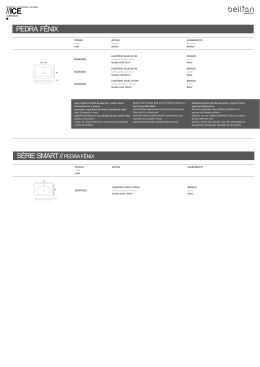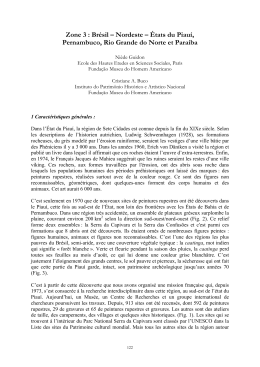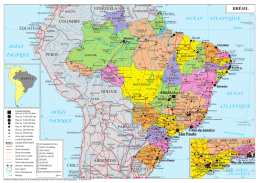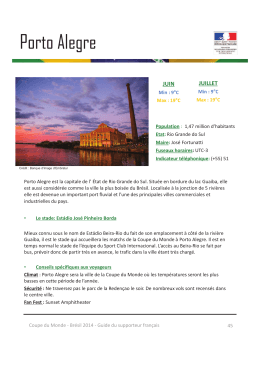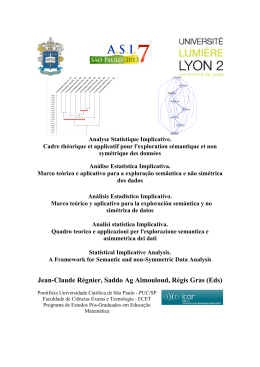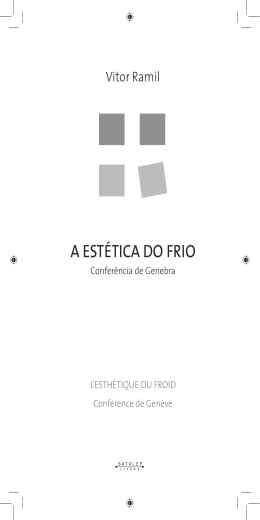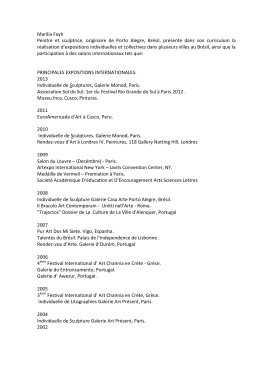Pedra Furada : uma revisão Niéde Guidon1 FUMDHAMentos VII - Niède Guidon 379 Em 1978, a equipe da Missão Arqueológica do Piauí, começou uma escavação, finalizada em 1988. A primeira parte da escavação foi realizada por Niéde Guidon. A partir de 1986, as campanhas foram dirigidas por Fabio Parenti, que realizou o estudo dos dados. Os resultados foram publicados, em 2003 (PARENTI F., 2003. Le gisement quaternaire de la Pedra Furada (Piaui, Bresil). Stratigraphie, chhronologie, evolution culturelle, Paris, Ed. Recherches sur les civilisations). Desde que foram publicados os primeiros artigos e comunicações (GUIDON, N. & DELIBRIAS, G., 1986, “Carbon-14 dates point to man in the Americas 32.000 years ago.” Nature , vol. 321, n° 6072,1925 june, pp. 769-771 ), relatando os resultados de datações C-14, julgadas muito antigas para a América do Sul, o sítio Pedra Furada originou controvérsias, às vezes mais passionais que científicas (D.J. MELTZER, J.M. ADOVASIO, T. D. DILLEHAY, 1996, “Uma visão do Boqueirão da Pedra Furada”. FUMDHAMENTOS, v. 1, número 1, pp 347-377) Vinte e oito anos depois do início das escavações na Pedra Furada, o momento é propício para rever resultados, no contexto das pesquisas que prosseguiram no sítio e, das descobertas realizadas em outros sítios da região. Os dados hoje disponíveis permitem propor novas explicações sobre o povoamento do continente americano, solidamente demonstradas e realizar uma síntese da situação atual do conhecimento. Os aspectos questionados pelos defensores do povoamento recente do continente americano, de origem asiática e pelo estreito de Behring foram analisados e devidamente refutados por: - PESSIS. A.-M. & GUIDON. N., 1996. Leviandade ou falsidade? Uma resposta a Meltzer, Adovasio & Dillehay. Falsehood or untruth? A reply to Meltzer, Adovasio & Dillehay. FUMDHAMENTOS, v.1,n.1, p. 379-394; - PARENTI, F, MERCIER,N, VALLADAS, H., 1990. The Oldest Hearths of Pedra Furada, Brasil: Current Research in the Pleistocene, Vol 7: 36-38 Orono, Maine. - ARAÚJO. A, FERREIRA. L.F, CONFALONIERI. U, CHAME, M. 1988. Hookworms and the peopling of America. Cadernos de Saúde Pública. RJ., 2 (4): 226-233. - ARAÚJO. A, FERREIRA. L.F. , 1995. Paleoparasitologia e o povoamento das Américas Paleoparasitology and the peopling of the Americas. FUMDHAMENTOS: v.1, n. 1, p. 105-111. - SANTOS, G.M., BIRD, M.I., PARENTI, F., FIFIELD, L.K., GUIDON, N., HAUSLADEN, P.A., 2003. A revised chronology of the lowest occupation layer of Pedra Furada Rock Shelter, Piauí, Brazil: the Pleistocene peopling of the Americas. Quaternary Science Review 22 (2003) 2303-2310. - VALLADAS, H., MERCIER, N., MICHAB, M., JORON, J.L., REYSS, J.L., GUIDON, N., 2003. TL age-estimates of burnt quartz pebbles from the Toca do Boqueirão da Pedra Furada (Piauí, Northeastern Brazil). Quaternary Science Review 22 (2003) 1257-1263. - FELICE, G.D.2002. A controvérsia sobre o sítio arqueológico Toca do Boqueirão da Pedra Furada, Piauí-Brasil. FUMDHAMENTOS II, Fundação Museu do Homem Americano. 143-178. FUMDHAMentos VII - Niède Guidon 380 A afirmação de que as fogueiras estruturadas, descobertas no sítio da Pedra Furada, não eram estruturas realizadas pelo Homem, mas simplesmente o resultado de fogos naturais de floresta, foi anulada pelos resultados de uma série de sondagens, feitas ao longo da descida do sítio da Pedra Furada até o vale, subindo a seguir pela margem oposta. Fogos de floresta teriam deixado carvões e marcas em toda a área, mas somente foram achadas fogueiras perto da parede do abrigo, sob a proteção da parte inclinada da falésia e no fundo do vale, perto da antiga margem do rio que correu no local até cerca de 10.000 - 9.0000 anos BP. Um fogo natural, se tivesse atingido o abrigo, teria esquentado todos os seixos de quartzo e quartzito que estivessem nesse momento sobre o solo. A análise TL de todos os seixos recolhidos nos níveis mais profundos, demonstrou que somente tinham sido aquecidos os que haviam sido descobertos formando parte das estruturas de fogueira. Os pesquisadores que, em razão do atual clima semi-árido, afirmaram que os fogos naturais deveriam ser freqüentes na pré-história local, não levaram em consideração as mudanças climáticas que afetaram a região. As pesquisas demonstraram que, até cerca de 10.000 anos BP, o clima local era tropical úmido; o setor norte da região estava coberto pela Floresta Amazônica e o setor sul fazia parte da Mata Atlântica, dois biomas úmidos. Até hoje, espécies animais e vegetais originárias dos dois biomas, existem no Parque Nacional Serra da Capivara. As observações levantadas sobre a qualidade e a natureza das peças líticas que, segundo alguns colegas, seriam simplesmente o resultado de choques e fraturas naturais, foram também avaliadas. Considerando que os resultados das análises feitas pelos pesquisadores europeus da equipe haviam sido questionados, o Prof. Robson Bonnichsen, da Texas A & M University, realizou uma série de análises das mais antigas peças líticas da Pedra Furada, utilizando o microscópio eletrônico. Em dezembro de 2004 enviou seu primeiro relatório, com as fotografias e suas conclusões. Tinha também programado escavar o setor do sítio Pedra Furada ainda intocado e reservado para fornecer novos dados para a procura de eventuais respostas. O projeto previsto para janeiro de 2005, foi truncado em conseqüência de seu falecimento. Em paralelo com nossos trabalhos complementares sobre os resultados das escavações na Pedra Furada, houve descobertas no Chile e no México, gerando novos dados que devem ser levados em consideração, em relação ao povoamento da América do Sul, (Adovasio, J.M. & D.R. Pedler. Monte Verde and the antiquity of humankind in the Americas Chilean Field Yields New Clues to Peopling of Americas, New York Times, August 1998.; Dillehay, Tom D. (1989). Monte Verde: A Late Pleistocene Settlement in Chile. Volume I: Palaeoenvironment and Site Context. Smithsonian Press.) , México (Human footprints in the Valsequillo Basin, Mexico: implications for the peopling of the Americas. Huddart, D., Gonzalez, S., Bennett, M.R.and Gonzalez-Huesca, A. Quaternary Science Reviews 25, 201-22, online 28th November 2005. ; A review of environmental change in the basin of Mexico (40,000-10,000 BP): implications for early humans. Huddart, D, Gonzalez, S. In Jimenez-Lopez, J.C, Gonzalez, S, Pompa y Padilla, J.A. and Ortiz Pedraza, F. eds. Early men in the Americas and the implications on the peopling of the Basin of Mexico. INAH Scientific Series, Mexico D.F. in press; Early humans in Mexico: new chronological data. Huddart, D., Gonzalez, S, Jimenez-Lopez, J.C., Hedges, R., Pompa y Padilla, J.A. In Jiminez-Lopez, J.C., Gonzalez, S., Pompa y Padilla, J.A. and Ortiz Pedraza, F. eds. Early men in the Americas and their implications on the peopling of the Basin of Mexico, INAH Scientific Series, Mexico D.F. in press), e na Carolina do Sul ( Goodyear, Albert C. and others “Archaeology of the Pleistocene-Holocene Transition in Eastern North America.” Quaternary International, Vol. 49/50, pp. 151-166. INQUA/Elsevier Science Ltd.1998. ; “The Early Holocene Occupation of the Southeastern FUMDHAMentos VII - Niède Guidon 381 United States: A Geoarchaeological Summary. In Ice Age Peoples of North America, edited by R. Bonnichsen and K. Turnmire, pp. 432-481. Oregon State University Press.1999 ; Goodyear and K. Steffy “Evidence of a Clovis Occupation at the Topper Site, 38AL23, Allendale County, South Carolina. Current Research in the Pleistocene Vol. 20:23-25. 2003; “Evidence of Pre-Clovis Sites in the Eastern United States. In Paleoamerican Origins: Beyond Clovis. edited by R. Bonnichsen et al. Texas A&M University Press (in press). 2004.), Há 110.000 – 100.000 anos o planeta estava em plena época glacial, o nível do mar estava cerca de -120 m abaixo do nível atual. Esta glaciação terminará em torno de há 20.000 anos. Sobre o continente, ao norte da América do Norte, sobretudo no Canadá, as geleiras eram imensas. Com o mar mais baixo, o número de ilhas entre a costa euro-africana e a costa sul-americana, era bem maior. As correntes marítimas favorecem a passagem para oeste, para o Caribe e para o litoral norte do Brasil. Se, há milhões de anos, algumas espécies de primatas passaram da África para o Brasil (Mario Alberto Cozzuol, Richard Kay, PUCRS Informação numero 130 – Jul-Ago / 2006), segundo os pesquisadores, navegando sobre troncos de árvore, como afirmar que Homo sapiens não teria também atravessado o Atlântico, utilizando balsas? O povoamento da Ilha das Flores prova, definitivamente, que Homo navega há mais de 840.000 anos. Como explicar a distribuição de traços culturais na América, a diferença entre o desenvolvimento cultural da América Latina e da América ao norte da Baixa Califórnia, o fato dos sítios mais antigos estarem ou no litoral atlântico ou mais ao sul, no Chile, se considerarmos verdadeira a teoria da passagem tardia por Behring? Não teria havido passagens pelas ilhas, que em épocas glaciais eram numerosas entre a costa australiana e a costa da Baixa Califórnia e o México? Face aos dados existentes eis um cenário que pode ser proposto: Há 150.000 – 110.000 anos os primeiros homens passaram das ilhas e da costa africana para a América. Essa passagem se faz para o Caribe e para a costa norte do Brasil, com um ponto de chegada próximo ao atual rio Parnaíba, então um rio muito grande; Esses primeiros imigrantes se estabelecem e, no decorrer dos milênios, alguns grupos seguem a costa, outros se separam e entram para o continente; No nordeste do Brasil alguns grupos seguem a costa e chegam à Amazônia, outros seguem o rio Parnaíba e entram em um de seus principais afluentes, o rio Piauí, que corria na grande depressão da planície periférica do São Francisco; A região era coberta pela floresta tropical úmida, tinha fauna rica e variada,com as espécies da megafauna do Pleistoceno, mas também com cavalos, lhamas, uma importante fauna de tamanho médio. Ao lado da planície, a imensa cuesta oferecia milhares de abrigos sob rocha, a montanha com fauna e flora diferentes, mas também ricas; Uma vez estabelecidos na região, se desenvolvem e, sem dúvida, ao fio dos milênios, pequenos grupos se separam e continuam a viagem para o sul, leste e oeste; FUMDHAMentos VII - Niède Guidon 382 Mas é necessário pensar que grupos asiáticos vieram pelo mar e chegaram ao Pacífico sul, ao Chile, por exemplo, outros à América Central; E, quando a glaciação terminou, o clima se torna mais cálido, e os homens que já estavam na Baixa Califórnia começaram a migrar para o norte. Outros que viviam na Ásia puderam começar a atravessar Behring e se encontraram com os homens que vinham do sul. Este cenário é impossível? Porque? Ver outras ilustrações página 392 1 - Niéde Guidon - Ecole des Hautes Etudes en Sciences Sociales - Fundação Museu do Homem Americano - [email protected] FUMDHAMentos VII - Niède Guidon 383 Pedra Furada : une mise au point Niéde Guidon1 FUMDHAMentos VII - Niède Guidon 384 En 1978, l’équipe de la Mission française du Piauí a commencé une fouille qui ne se terminerait qu’en 1988. Fabio Parenti, qui a dirigé les campagnes depuis 1986, s’est chargé de l’étude de toutes les données, qui lui ont permis de rédiger une thèse de doctorat, publiée en 2003 (Le gisement quaternaire de la Pedra Furada (Piauí, Brésil). Stratigraphie, chronologie, évolution culturelle, Paris, Ed. Recherches sur les civilisations). Depuis les premières publications (GUIDON, N. & DELIBRIAS, G., 1986. Carbon-14 dates point to man in the Americas 32.000 years ago. Nature, vol. 321, n° 6072,19-25 june, 769-771) faisant état de datations C-14, jugées assez reculées pour l’Amérique, Pedra Furada a soulevé des discussions, trop souvent plus passionnées que scientifiques. Vingt-huit ans après qu’une truelle eut gratté pour la première fois le sol du grand abri de la Pedra Furada, il est temps de faire une mise au point définitive sur le sujet. Pendant ces années, d’autres sites et découvertes se sont ajoutés aux données qui permettent, aujourd’hui, d’envisager une hypothèse solidement fondée sur le peuplement du continent américain. Les points que critiquent les tenants du peuplement récent, d’origine asiatique, par la voie de Behring, ont été analysés et dûment réfutés : - PESSIS. A.-M. & GUIDON. N., 1996. Leviandade ou falsidade? Uma resposta a Meltzer, Adovasio & Dillehay. Falsehood or untruth? A reply to Meltzer, Adovasio & Dillehay. FUMDHAMENTOS, v.1,n.1, p. 379-394; - PARENTI, F, MERCIER,N, VALLADAS, H., 1990. The Oldest Hearths of Pedra Furada, Brasil: Current Research in the Pleistocene, Vol 7: 36-38 Orono, Maine. - ARAÚJO. A, FERREIRA. L.F, CONFALONIERI. U, CHAME, M. 1988. Hookworms and the peopling of America. Cadernos de Saúde Pública. RJ., 2 (4): 226-233. - ARAÚJO. A, FERREIRA. L.F. , 1995. Paleoparasitologia e o povoamento das Américas Paleoparasitology and the peopling of the Americas. FUMDHAMENTOS: v.1, n. 1, p. 105-111. - SANTOS, G.M., BIRD, M.I., PARENTI, F., FIFIELD, L.K., GUIDON, N., HAUSLADEN, P.A., 2003. A revised chronology of the lowest occupation layer of Pedra Furada Rock Shelter, Piauí, Brazil: the Pleistocene peopling of the Americas. Quaternary Science Review 22 (2003) 2303-2310. - VALLADAS, H., MERCIER, N., MICHAB, M., JORON, J.L., REYSS, J.L., GUIDON, N., 2003. TL age-estimates of burnt quartz pebbles from the Toca do Boqueirão da Pedra Furada (Piauí, Northeastern Brazil). Quaternary Science Review 22 (2003) 1257-1263. - FELICE, G.D.2002. A controvérsia sobre o sítio arqueológico Toca do Boqueirão da Pedra Furada, Piauí-Brasil. FUMDHAMENTOS II, Fundação Museu do Homem Americano. 143-178. Ainsi, l’affirmation selon laquelle les foyers datés n’étaient pas des structures dues à l’homme, mais résultaient simplement d’un feu de forêt, a-t-elle été réduite à néant par une série de sondages pratiqués le long de la descente de la Pedra Furada, jusqu’à la vallée, remontant ensuite les versants opposés. Un feu de forêt aurait laissé des traces partout; or, nous n’avons trouvé de foyers qu’à proximité de la paroi FUMDHAMentos VII - Niède Guidon 385 de l’abri, protégée par la partie inclinée de la falaise, et au fond de la vallée, près de l’ancienne berge du fleuve qui a coulé jusqu’à environ 10.000-9.000 ans BP. Un feu de forêt, parvenu à l’abri, aurait chauffé également tous les galets de quartz et de quartzite qui auraient jonché le sol, mais l’analyse TL du réchauffement de tous les galets ramassés dans les plus profonds niveaux a démontré que seuls ceux qui avaient été utilisés comme structure de foyer avaient été chauffés. La critique portant sur la qualité des vestiges lithiques qui, selon certains collègues, ne seraient que des cassures naturelles, a aussi été vérifiée. L’analyse faite par les membres européens de l’équipe ayant donc été réfutée, nous avons pris contact avec le Pr. Robson Bonnichsen, alors à la Texas A & M University, qui nous a offert de faire analyser, au microscope électronique de cette université, les plus anciennes pièces lithiques de la Pedra Furada. En décembre 2004, il nous a envoyé son premier rapport, avec des photos et ses observations. Il avait programmé la fouille de ce qui subsiste de la Pedra Furada, pour janvier 2005. Malheureusement, il est mort le 24 décembre 2004. En présentant ces données, nous rendons hommage au Pr. Bonnichsen. Selon lui, les plus anciens vestiges lithiques de la Pedra Furada, datés par TL de 100.000 ans, ont été fabriqués et utilisés par l’homme. Parallèlement à nos travaux sur les résultats de la Pedra Furada, des découvertes au Chili, au Mexique, sur la côte atlantique des États-Unis, constituent de nouvelles données qui doivent être prises en compte. Nous avons alors entrepris des recherches bibliographiques sur tous les problèmes pouvant avoir un lien avec le peuplement de l’Amérique. Peut-être Platon pourrait-il être le premier auteur cité, puisqu’il mentionne un continent au-delà des Colonnes d’Hercule! Il y a 110.000-100.000 ans la terre connaissait une époque glaciaire, la mer à environ 120 m au-dessous du niveau actuel. Cette glaciation se termine aux environs de 20.000 ans. Au nord de l’Amérique du Nord, surtout au Canada, les zones glaciaires étaient immenses. Le niveau da la mer étant plus bas qu’actuellement, le nombre d’îles entre les côtes euro-africaine et américaine était plus important. Les courants favorisent le passage vers le Caribe et vers le littoral septentrional du Brésil. Voici des millions d’années, des singes sont passés d’Afrique vers le Brésil, voguant, selon les chercheurs, sur des troncs d’arbres. Pourquoi l’homme n’ aurait-il pas fait de même sur des radeaux? Récemment, des Africains, qui naviguaient vers l’Europe, ont fait naufrage et sont parvenus, à la nage, sur la côte nord-est du Brésil. Comment expliquer la distribution des traits culturels en Amérique, si nous tenons pour vraie la théorie du passage tardif par Behring? L’Amérique du Sud possède un art rupestre varié, de nombreux sites, des milliers de figures. Sur tout le territoire brésilien nous trouvons des sites préhistoriques. Il y a des industries dont la technique est très semblable à celle du paléolithique moyen d’Europe, présentant même des éclats de type levalloisien, à formes prédéterminées. Le silex étant rare, la majorité des pièces semble fruste, mais des chefs-d’œuvre en quartz et quartzite démontrent que les hommes dominaient parfaitement la technique de taille. Quels sont les sites d’art rupestre au nord de la région de la Basse-Californie? Quelles sont les industries lithiques dans ces régions? L’industrie céramique en Amérique du Sud et centrale a atteint des sommets techniques et décoratifs. Pour ne citer qu’un cas,quels exemples au nord des États-Unis et au Canada peuvent se comparer aux vases des cultures amazoniennes? FUMDHAMentos VII - Niède Guidon 386 Les maisons des Indiens d’Amazonie sont des chefs-d’œuvre d’architecture, avec lumière zénithale, le pied droit très haut. Les villages des Gê sont vastes, leurs maisons hautes, fraîches. La pénombre en éloigne les insectes. Les Indiens du nord de l’Amérique du Nord utilisaient le teepee, que nous avons tous vu dans les westerns. Les grands empires, inca, aztèque et maya, sont encore localisés dans la zone chaude du continent, à la limite des glaciations. Sans doute, à l’époque, n‘y avait-il plus de glaciation, mais ces empires se sont appuyés sur des cultures plus anciennes, qui existaient il y a longtemps dans ces régions et, comme dans le reste du monde, ont évolué vers le pouvoir central, les villes, les empires. Nous avons donc, jusqu’au niveau du méridien 35 N, un monde qui se développait tandis que, au nord, dominaient les glaces. Voici le scénario qui pourrait être proposé : Il y a 150.000-110.000 ans, les premiers hommes passent des îles et de la côte africaine vers l’Amérique. Ce passage a dû se faire vers le Caribe et la côte nord du Brésil, jusqu’aux environs de l’embouchure de l’actuel Parnaiba, alors très grand fleuve. Ces premiers immigrants s’établissent et, peu à peu, les groupes se séparent, pénètrent sur le continent, vers l’ouest, le nord, le sud. Au nord-est du Brésil, des groupes suivent la côte et arrivent en Amazonie, d’autres suivent le Parnaiba et rencontrent un très grand affluent, le rio Piauí, qui coulait dans l’immense plaine de la dépression du fleuve São Francisco. Recouverte par une forêt tropicale humide, avec des îlots de prairie, la région abritait une faune riche et variée, constituée des espèces de la paléofaune du quaternaire, mais aussi de chevaux, lamas et de toute une faune de taille moyenne. À côté, une immense cuesta, aux milliers d’abris sous roche, la montagne avec faune et flore différentes, mais aussi riches. Une fois établis dans la région, ils se développent et, sans doute, au cours des millénaires, de petits groupes dissidents se séparent et continuent le voyage vers le sud, l’est et l’ouest. Mais il faut aussi imaginer que des groupes asiatiques ont pris la mer et sont arrivés par le Pacifique sud, au Chili, par exemple. Et quand la glaciation touche à sa fin, le climat se réchauffe, les hommes qui étaient déjà en Basse-Californie ont pu commencer à migrer vers le nord. D’autres, qui vivaient en Asie, ont commencé à traverser Behring et se sont retrouvés avec les Américains qui venaient du sud. Ce scénario est impossible? Pourquoi? Voir d’autres illustratations page 392 FUMDHAMentos VII - Niède Guidon 387 Pedra Furada : A Revision Niéde Guidon1 FUMDHAMentos VII - Niède Guidon 388 In 1978 the team of the Archaeological Mission of Piauí started excavating, ending in 1988. The first part of the digging was realized by Niède Guidon. From 1986 on the campaign was headed by Fabio Parenti who did the data analysis. The results were published in 2003. ( PARENTI, F., 2003. Le gisement quaternaire de la Pedra Furada (Piauí, Brésil). Stratigraphie, chronologie, évolution culturelle, Paris, Ed. Recherches sur les civilisations). Since the publication of the first articles and reports, (GUIDON, N. & DELIBRIAS, G., 1986, “Carbon-14 dates point to man in the Americas 32.000 years ago,” Nature, vol. 321, no. 6072, June 19-25, pp. 769771) producing the results of Carbon-14-dating which was judged very old for South America, the Pedra Furada site has led to a heavy controversy, sometimes more passionate than scientific. (D.J. MELTZER, J.M. ADOVASIO, T.D. DILLEHAY, 1996, “ Uma visão do Boqueirão da Pedra Furada”. FUMDHAMENTOS, v. 1, número 1, pp 347 – 377). Twenty-eight years after beginning excavations at Pedra Furada time has come to review the results within the context of the research which has continued at the site and of discoveries made at other sites of the region. The information today available permits to propose new explications, thoroughly backed up, as to the peopling of the American continent and to form a synthesis of the present level of knowledge. Those aspects which were questioned by the defenders of a recent peopling of the American continent, being of Asian origin and undertaken via Behring Strait, were analysed and duly refuted by: - PESSIS. A.-M. & GUIDON. N., 1996. Leviandade ou falsidade? Uma resposta a Meltzer, Adovasio & Dillehay. Falsehood or untruth? A reply to Meltzer, Adovasio & Dillehay. FUMDHAMENTOS, v.1,n.1, p. 379-394; - PARENTI, F, MERCIER,N, VALLADAS, H., 1990. The Oldest Hearths of Pedra Furada, Brasil: Current Research in the Pleistocene, Vol 7: 36-38 Orono, Maine. - ARAÚJO. A, FERREIRA. L.F, CONFALONIERI. U, CHAME, M. 1988. Hookworms and the peopling of America. Cadernos de Saúde Pública. RJ., 2 (4): 226-233. - ARAÚJO. A, FERREIRA. L.F. , 1995. Paleoparasitologia e o povoamento das Américas Paleoparasitology and the peopling of the Americas. FUMDHAMENTOS: v.1, n. 1, p. 105-111. - SANTOS, G.M., BIRD, M.I., PARENTI, F., FIFIELD, L.K., GUIDON, N., HAUSLADEN, P.A., 2003. A revised chronology of the lowest occupation layer of Pedra Furada Rock Shelter, Piauí, Brazil: the Pleistocene peopling of the Americas. Quaternary Science Review 22 (2003) 2303-2310. - VALLADAS, H., MERCIER, N., MICHAB, M., JORON, J.L., REYSS, J.L., GUIDON, N., 2003. TL age-estimates of burnt quartz pebbles from the Toca do Boqueirão da Pedra Furada (Piauí, Northeastern Brazil). Quaternary Science Review 22 (2003) 1257-1263. - FELICE, G.D.2002. A controvérsia sobre o sítio arqueológico Toca do Boqueirão da Pedra Furada, Piauí-Brasil. FUMDHAMENTOS II, Fundação Museu do Homem Americano. 143-178. FUMDHAMentos VII - Niède Guidon 389 The affirmation that the hearths discovered at Pedra Furada were not man-made but simply a consequence of natural forest fires, was annulled by the results of a series of test pits which were performed at Pedra Furada all the way down to the valley and then up again on the opposite side. Had there been forest fires those would have left charcoal and other traces all over the area but fire remains were only encountered near the wall of the shelter, protected by the overhanging part of the cliff and at the bottom of the valley, near the ancient bank of the river which ran there until approx. 10.000 – 9.000 years BP. If a natural fire had reached the shelter, it would have heated all the quartz and quartzite pebbles which at that moment had been on the ground. The TL analysis of all pebbles collected on the deepest levels demonstrated that only those had been hot that were discovered to be part of the hearth. Those scientists who, given the present semi-arid climate, asserted that forest fires must have occurred frequently in the local pre-history, did not consider the climatic changes which took place in the area. Research has shown that, until approx. 10.000 years BP the local climate was tropicalhumid; the northern sector was covered by the Amazon rain forest and the southern sector was part of the Atlantic rain forest, both humid biomes. Until today, plant and animal species which originated in these biomes, still exist at Serra da Capivara National Park. Also evaluated were observations from some colleagues as to the quality and nature of the lithic samples. It was alleged that these simply were the results of shocks and fractures produced by nature. Considering that the results of the analyses made by European researchers of our team were questioned, Prof. Robson Bonnichsen, of Texas A & M University, realized a series of analyses on the most ancient stone samples available at Pedra Furada using the electronic microscope. In December 2004 he sent his first report, with photographs and his conclusions. He had also planned to dig in that sector of Pedra Furada which has been left untouched and so would deliver new data in search of answers. This project, scheduled for January 2005, was cancelled as a consequence of his passing away. Parallel to our own additional research of the excavations at Pedra Furada, discoveries were made in Chile and Mexixo, supplying new data which must be taken into account in relation to the peopling of South America. (ADOVASIO, J. M. & PEDLER, D. R., Monte Verde and the antiquity of humankind in the Americas, Chilean Field Yields New Clues to Peopling of Americas, New York Times, August 1998; Dillehay, Tom D. (1989). Monte Verde: A Late Pleistocene Settlement in Chile, Vol. I: Palaeoenvironment and Site Context. Smithsonian Press), Mexico (Human footprints in the Valsequillo Basin, Mexico:implications for the peopling of the Americas, Huddart, D., Gonzalez, S., Bennett, M. R., and Gonzalez-Huesca, A., Quaternary Science Review 25, 201– 22, online 28th November, 2005; A review of environmental change in the Basin of Mexico (40.000 – 10.000 BP): implications for early humans. Huddart, D., Gonzalez, S., In Jimenez-Lopez, J. C., Gonzalez, S., Pompa y Padilla, J. A., and Ortiz Pedraza, F., eds. Early men in the Americas and the implications on the peopling of the Basin of Mexico, INAH Scientific Series, Mexico, D. F. in press; Early humans in Mexico: new chronological data. Huddart, D., Gonzalez, S., Jimenez-Lopez, J. C., Hedges, R., Pompa y Padilla, J. A., and Ortiz Pedraza, F. eds. Early men in the Americas and their implications on the peopling of the Basin of Mexico, INAH Scientific Series, Mexico, D. F. in press) and in Carolina do Sul, (Goodyear, Albert C., and others “Archaeology of the Pleistocene-Holocene Transition in Eastern North America”. Quaternary International, vol. 49/50, pp 151166. INQUA/Elsevier Science Ltd. 1998.; The Early Holocene Occupation of the Southeastern United States: A Geoarchaeological Summary. In: Ice Age Peoples of North America, ed. by R. Bonnichsen and K. Turnmire, pp 432-481, Oregon State University Press, 1999.; Goodyear and K. Steffy “Evidence of a Clovis Occupation at the Topper Site”, 38 AL 23, Allendale County, South Carolina, in Current Research in the Pleistocene vol. 20; 23-25. 2003.; “Evidence of Pre-Clovis Sites in the Eastern United States”. In: Paleoamerican Origins: Beyond Clovis, ed.by R. Bonnichsen et al. Texas A & M University Press (in press). FUMDHAMentos VII - Niède Guidon 390 110.000 – 100.000 years ago our planet was at full ice age stage and the sea level was approx. 120 m below the present level. This glaciation ended approx. 20.000 years ago. On the continent, to the north of North America, especially in Canada, huge glaciers rose. With the sea level so much lower, the number of islands between the Euro-African and the South-American coast increased a lot. The maritime currents favoured a passage to the east, to the Carribean and the northern coast of Brazil. If, according to scientists, millions of years ago some species of primates crossed from Africa to Brazil on top of tree trunks, (Mario Alberto Cozzuol, Richard Kay, PUCRS Informação numero 130 – Jul.Ago / 2006) there is no way of denying that Homo sapiens has done this, too, using rafts. The peopling of Flores Island proves definitely that Homo has navigated for more than 840.000 years. How can we explain the distribution of cultural features in America, the difference between the cultural development of Latin America and America north of Baja California, the fact of much older sites distributed either along the Atlantic coast or more to the south, in Chile, if we consider true the theory of a much later passage via Behring? Could there not have been crossings among the islands which during the glacial period were numerous between the Australian coast and the Baja California or Mexican coast? In view of the existing data the following scenario could be suggested: - 150.000 – 110.000 years ago the first humans come via the islands from the African coast to America. They cross to the Carribean and to the northern coast of Brazil, with a landing place near by the present Parnaíba River, then a big river. - These first immigrants settle there and over the next thousand years some groups follow the coast line, others separate and advance to the interior of the continent. - In Northeastern Brazil some groups wander along the coast line and arrive at the Amazon, others follow the Parnaíba River and then enter one of its tributaries, the Piauí River which runs through the big depression of the peripherical plain of the São Francisco River. - The region was covered by a tropical-humid forest, with a rich and varied fauna, the species being Pleistocene mega-fauna, but there were also horses and llama, an important middle size fauna. Next to the plain, the vast “cuesta” presented thousands of rock shelters, the mountains with a different fauna and flora, equally important. - Once people settle down in the area, there are without doubt, over the next thousand years, small groups that separate and travel south, east and west. - We also have to consider that groups from Asia came by the sea and arrived at the South Pacific, Chile, e.g., others at Central America. - Then, when the glacial period ended, the climate became warmer and those people who were already in the Baja California area began to migrate north. Others, living in Asia, could start crossing Behring Strait and met with those who came from the south. Is this such an impossible scenario? Why? FUMDHAMentos VII - Niède Guidon 391 Fotos Pictures Photos R. Bonnichsen FUMDHAMentos VII - Niède Guidon 392 Toca do Boqueirão da Pedra Furada - 17359 - Esc. LESTE SUL Nível - F32 Data - 10/05/88 Figure 1. The dorsal side of a split cobble. Box indicates area of magnification in the following images. Figure 2. The ventral side of the split cobble. FUMDHAMentos VII - Niède Guidon 393 Figure 3. Lacquer-like polish from the red box in Figure 1 at 100x. Note reformed silica adhering to the edge possibly deposited on the edge from tool use. Figure 4. Close-up of edge illustrated in Figure 3 shown here at 200x. Figure 5. The reformed silica along the edge shown here at 500x. FUMDHAMentos VII - Niède Guidon 394 Toca do Boqueirão da Pedra Furada - 18326 - Esc. LESTE SUL Nível - 12 (F2) Data - 16/06/88 Figure 1. A flaked cobble with flake scars on the “dorsal” side. The red box indicates the area magnified in subsequent images. Figure 2. The opposite side of the cobble. The blue box indicates the area magnified in subsequent images FUMDHAMentos VII - Niède Guidon 395 Figure 3. The area enclosed by the red box in Figure 1 at 100x. Note fine striae on surface called “linear indicators” suggests tool movement in two directions. Figure 4. Close-up of the central area of Figure 3 at 200x illustrating multidirectional tool use. FUMDHAMentos VII - Niède Guidon 396 Figure 5. The area in the blue box in Figure 2 at 100x showing linear indicators near the edge in perpendicular groups (yellow arrows). Note the areas of abrasive polish (red arrows). Figure 6. The upper area of Figure 6, magnified at 200x, indicates tool use smoothed the texture of the rock surface. FUMDHAMentos VII - Niède Guidon 397 Toca do Boqueirão da Pedra Furada - 18352 - Esc. LESTE SUL Nível - 12 (F3) Data - 17/06/88 Figure 1. Dorsal view of a flaked cobble. Figure 2. Ventral side of flaked cobble. The colored boxes enclose magnified areas of the tool’s edge in the following images. FUMDHAMentos VII - Niède Guidon 398 Figure 3. Polished and abraded surfaces with linear indicators (100x) from the red boxed area in Figure 2. Figure 4. Close-up (200x) of the central area of Figure 3. Figure 5. The lower right portion of Figure 4 at 500x. Note the linear tracks of plastically reformed silica indicating tool movement in two directions. FUMDHAMentos VII - Niède Guidon 399 Figure 6. The blue boxed area in Figure 2 shown here at 200x. Note linear tracks indicating tool movement in two directions. Figure 7. Right center portion of Figure 6 at 500x. Note silica build-up from implement use along the arris. Figure 8. The same area but slightly in from the tool edge also at 500x. Repeated tool use has resulted in deep coarse scratches overlaying and oblique to the finer ones. Material is clearly being gouged from a previously smoothed surface. FUMDHAMentos VII - Niède Guidon 400 Toca do Boqueirão da Pedra Furada - 18547 - Setor E.L.T.L Nível - 14 (F2) Data - 28/06/88 Figure 1. Dorsal side of flake exhibiting use-wear characteristics. Box denotes the area seen in the subsequent micro-images. Figure 2. Ventral side of flake. Box indicates area seen in the following images and corresponds to the box on the dorsal side in Figure 1. FUMDHAMentos VII - Niède Guidon 401 Figure 3. Flake tool with rounded and polished edge shown here at 40x. Figure 4. Dorsal aspect of the edge shown here at 100x. Note that directional indicators, which indicate tool movement direction, are generally oblique to the edge Figure 5. Close-up of the directional indicators in the upper left quadrant of Figure 4 shown here at 200 x FUMDHAMentos VII - Niède Guidon 402 Figure 6. Close-up of tool edge in red box on ventral edge that has been smoothed and “lacquered” by silica gels deposited during tool use at 500x. FUMDHAMentos VII - Niède Guidon 403
Download
